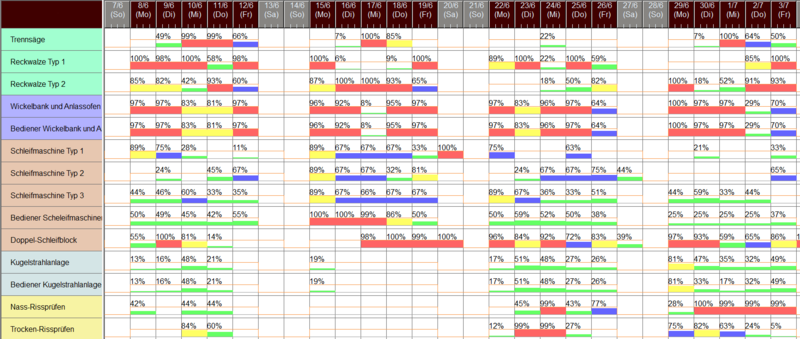AUTOMOTIVE AND AUTO PARTS
LEAD TIME MINIMIZATION THROUGH BOTTLECK PROCESS OPTIMIZATION
EFFICIENT USE OF RESOURCES AND INCREASED PRODUCTIVITY
Typical to automotive manufacturing is the run through the process multiple times. Optimally scheduling production according to this proves to be a difficult task, of which another one is scheduling the often many different bottleneck processes.
Pieces must be delivered to the car manufacturer “just-in-sequence” and are usually produced to order. The processes for plastic and metal injection, assemble and painting have to be scheduled optimally, in takt with and as near as possible to the just-in-sequence delivery date.
Deliver personalized mobility at scale and as a service through a customer-centric ecosystem using our solutions and methodologies for the automotive industry.
Use of physical characteristics of a production system to cope with uncertainty in the production process, such as yield factors, safety stocks, or over-planning quantities (supermarkets)
Typical planning and scheduling challenges that and APS help to fix in automotive and auto parts industry are:
- Holistic Process Synchronization
- Minimized Lead Times and Inventory Stocks
- Flawless Delivery Reliability
- Find an optimal workforce capacity level for each period within the planning horizon.
- Scheduling processes in optimal sequence, including bottleneck processes
- Shortening Lead Time
- Reducing Intermediate Parts
- Considering Various Item Specifications and Resource Capabilities
- Consideration of Alternative Routes
- Prioritized Routes and Resources
- Consideration of Material Availability
- Optimal number of permanent employees and an optimized schedule for contingent capacity per period
- Greater Flexibility
- Minimized Planning Efforts
- Multi-Stage Machine, Mold, and Worker Planning
- Just-in-Sequence Delivery
- Consideration of Alternative Routes
- Preferred Routes and Resources
- Optimal Provision of Molds
- Optimal Timing of External Setup
- Optimal Timing of Maintenance Measures for Machines and Molds
- Shorter Delivery Times
- Holistic Process Synchronization through Optimal, Sequential Scheduling
- Drastically Shortened Production Lead Times through Bottleneck-Oriented Planning
- Massive Reduction in Intermediate Parts
- Increased Resource Efficiency
- Improved Transparency in Factory and Order Status
- Greater Flexibility in the Case of Order Changes, Rush Orders, Machine Failure, etc.
- Drastically Reduction in Planning Efforts
- Elimination of Stagnation through Just-in-Sequence Planning
- Just-in-Time Resource Availability
- Process Synchronization by Scheduling with Finite Resource Capacities
- Increased Transparency in Factory and Order Status with Visual Factory
- Greater Flexibility in the Case of Order Changes, Rush Orders, Machine Failure, etc.
- Substantial Reduction in Planning Efforts.

